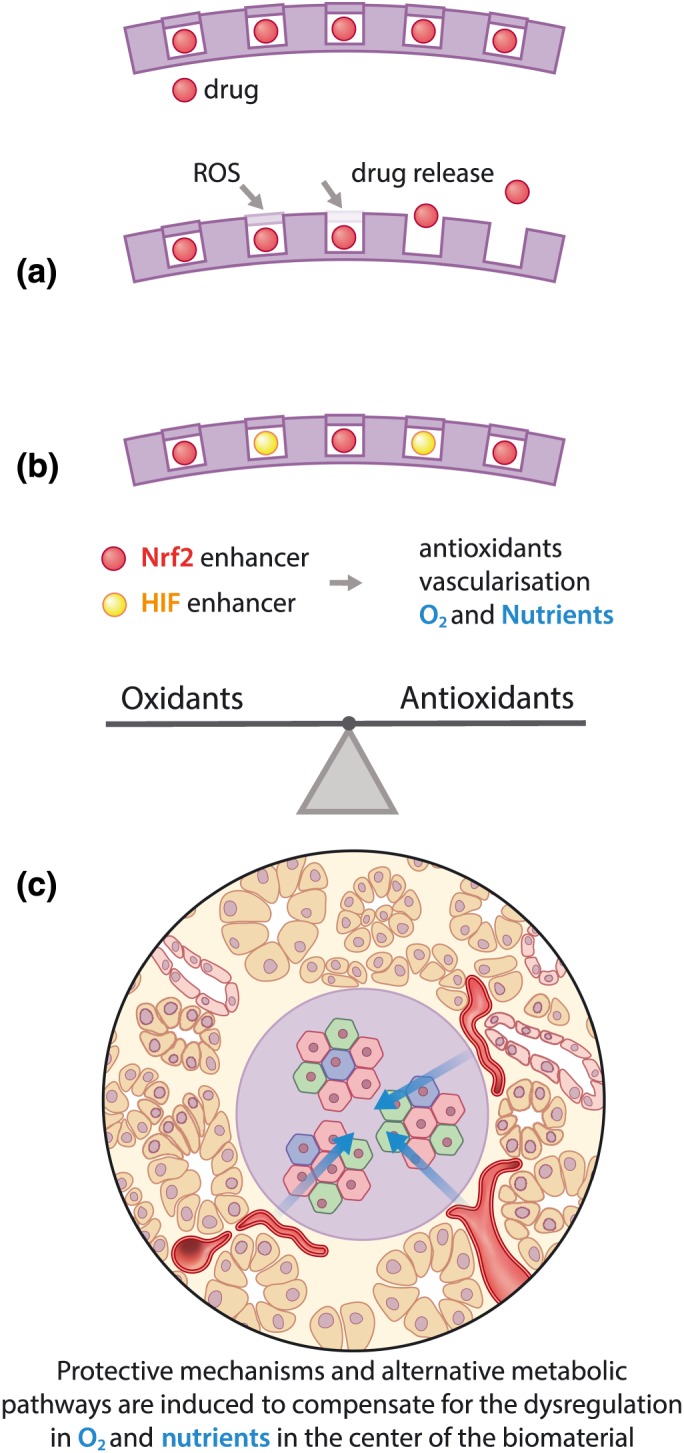Figure 3.

(a) A superior strategy for redox modulation could be to design a biomaterial that releases a drug in presence of excess reactive oxygen species (ROS) or oxidative stress. (b) The molecular targets are the redox sensor transcription factors Nrf2 and hypoxia inducible factor (HIF). By modulating Nrf2, the regulation of endogenous antioxidant systems (Sthijns et al., 2017) is induced, resulting in restoration of the redox balance. HIF activation increases anaerobic metabolism, stimulates angiogenesis, and increases glutaminase‐mediated glutathione synthesis, thereby enhancing endogenous antioxidant systems to recover the redox balance (Stegen, van Gastel, et al., 2016; Thirlwell et al., 2011). (c) Introducing Nrf2 and HIF enhancers in a biomaterial for pancreatic islets could prevent damage from oxidative stress, induce alternative metabolic pathways to ensure a sufficient energy supply, and enhance angiogenesis
